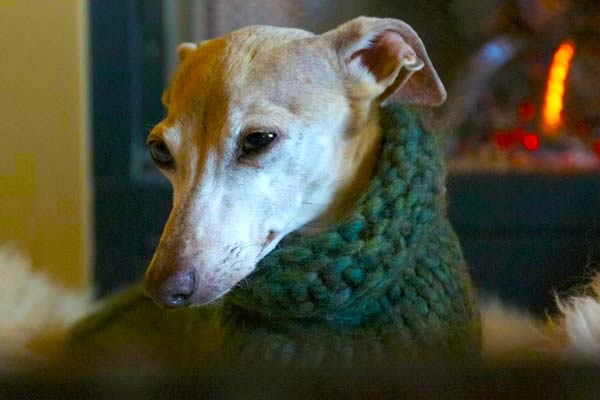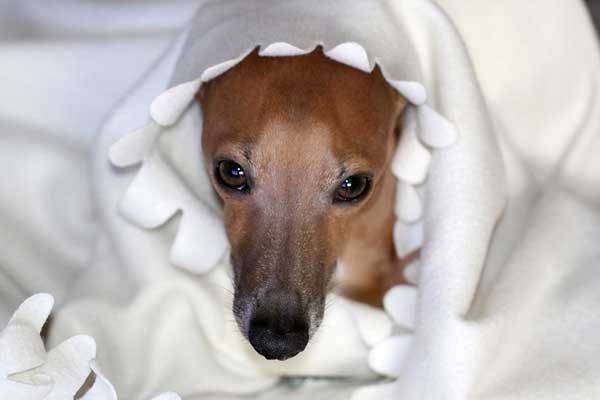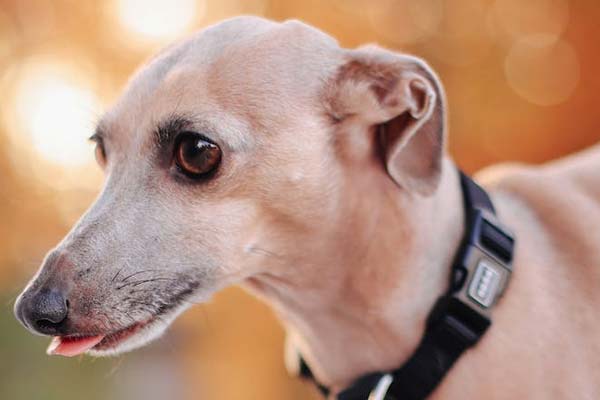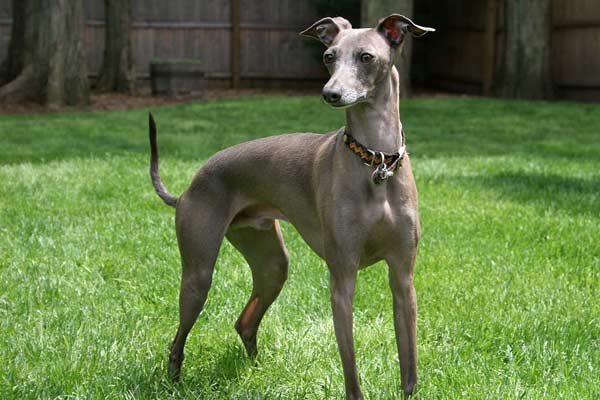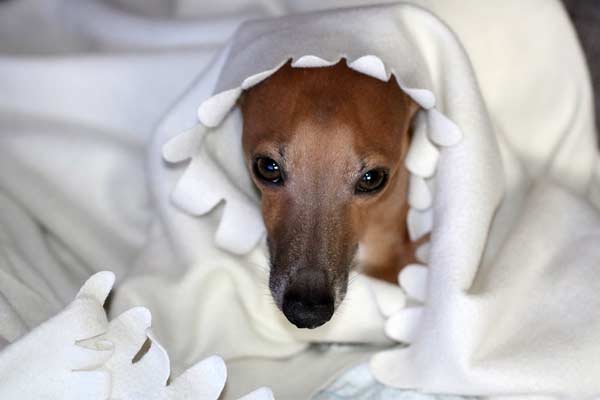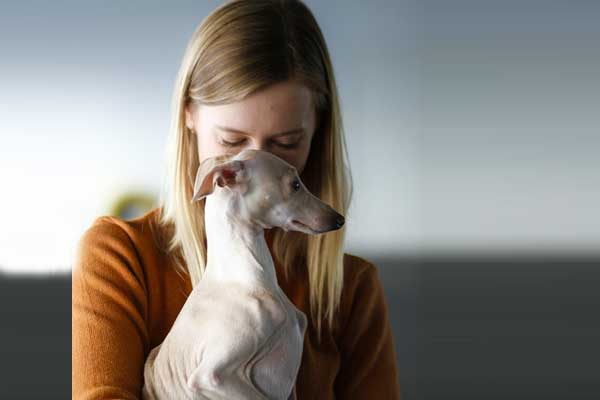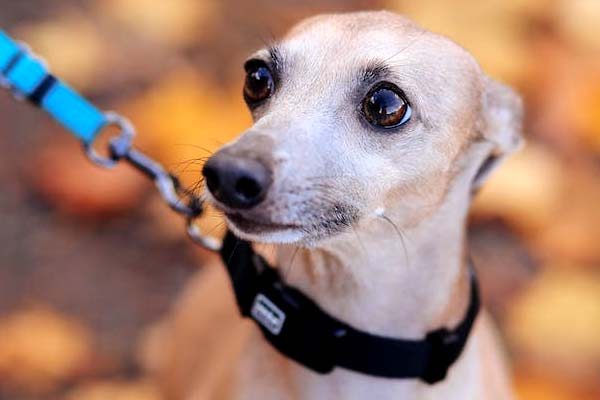Can Italian Greyhounds Be Left Alone? The Ultimate Guide to Ensuring Your Dog’s Comfort and Safety!
Imagine a small, graceful dog with a heart full of love and a playful spirit. That’s the Italian Greyhound for you! But, like any pet parent, you might wonder if leaving these adorable dogs alone for extended periods is okay. While it is possible to leave an Italian Greyhound alone, it is crucial to do so responsibly.
Italian Greyhounds, known for their friendly nature, should be supported for extended durations. These dogs flourish when they are in the company of humans, and without it, they may experience boredom, loneliness, and anxiety. Consequently, this can lead to undesirable behaviors stemming from their distress.
That being said, Italian Greyhounds can be left alone for brief periods, provided they receive adequate training and preparation.
Can Italian Greyhounds Be Left Alone?
Italian Greyhounds are affectionate, playful, and sensitive, which may lead to separation anxiety. It’s recommended to leave them alone for 6-8 hours, as more extended periods can cause boredom and stress.
To prepare your Italian Greyhound for alone time, start training early with potty, crate, and obedience training. Ensure they get enough exercise, attention, and affection to reduce separation anxiety.
Create a routine when leaving your dog alone, such as a walk beforehand, providing toys and comfortable space. Gradually increase alone time to help them adjust. If they show separation anxiety, seek professional help, consider supplements, desensitizing techniques, or hire a dog walker.
Italian Greyhounds can be left alone with proper training, exercise, and attention. They can thrive as indoor dogs with the appropriate care.
Separation Anxiety
Italian Greyhounds are adored for their loving temperament and strong bond with their owners. Yet, this attachment can sometimes result in separation anxiety when left alone. Separation anxiety occurs when a dog feels stressed or anxious due to being apart from its owner or being alone for a long time.
Symptoms of separation anxiety in Italian Greyhounds may include excessive barking, destructive behavior, pacing, and even self-harm. Addressing separation anxiety in Italian Greyhounds as soon as possible is crucial to prevent further stress and anxiety.
Several tips and techniques can help prevent or reduce separation anxiety in Italian Greyhounds. These include:
- Desensitizing: Gradually getting the Italian Greyhound used to being left alone for short periods.
- Training: Teaching the Italian Greyhound basic obedience commands such as “stay” and “come” can help to reduce separation anxiety.
- Supplements: Some supplements, such as CBD oil or melatonin, may help to reduce anxiety in Italian Greyhounds.
- Professional help: In severe cases of separation anxiety, seeking professional help from a veterinarian or dog behaviorist may be necessary.
It is important to note that each Italian Greyhound is different, and what works for one may not work for another. Patience and consistency are key when addressing separation anxiety in Italian Greyhounds.
Training for Being Alone
Italian Greyhounds are known for their affectionate and loyal nature, which makes them great companions. However, they can also suffer separation anxiety if left alone for extended periods. Training your Italian Greyhound to be alone early is essential to prevent this.
Start Training Early
Start training your Italian Greyhound to be alone from the beginning. Begin with short periods of separation, gradually increasing the time as your puppy becomes more comfortable. This training can involve leaving the room for a few minutes while your puppy is in a crate or designated area.
Socialization
Socializing your Italian Greyhound is super important to avoid separation anxiety. Let them meet new people and animals and experience various places to feel at ease in new situations. This way, they’ll be more confident and less worried about themselves.
Crate Training
Crate training is a fantastic method to teach your Italian Greyhound to enjoy alone time. A crate offers a safe and comfy place for your dog to unwind when you’re away. Begin by slowly showing your dog the crate and using treats or kind words to make them feel good about going in and staying put.
Tips for Being Alone
Here are some tips to help your Italian Greyhound adjust to being alone:
- Ensure your dog gets sufficient exercise and mental engagement before being left alone.
- Offer toys and treats to keep your pet entertained.
- Play soothing tunes or keep the TV running for background sounds.
- Refrain from overreacting when departing or arriving home.
Symptoms of Separation Anxiety
If your Italian Greyhound exhibits symptoms of separation anxiety, such as barking, destructive chewing, or bathroom accidents, it may be time to seek professional help. A veterinarian or animal behaviorist can guide how to manage your dog’s anxiety and prevent further problems.
Training your Italian Greyhound to be alone is essential for preventing separation anxiety. Start training early, socialize your dog, and consider crate training. Additionally, follow the tips mentioned above and seek professional help if necessary.
Recommended Time Alone
Italian Greyhounds are friendly pets that love being with people. They might have a hard time if left alone for too long. It’s a good idea to keep their alone time between six to eight hours max, so they don’t get bored, lonely, or worried.
It’s crucial to train Italian Greyhounds from a young age to handle being alone, as this helps them adjust and prevents separation anxiety. If they spend more than eight hours alone, they could become destructive and excessively anxious.
Ensuring your Italian Greyhound gets ample exercise before being left alone can help reduce anxiety and burn off excess energy. Additionally, offering toys and puzzles can keep them entertained during your absence.
When leaving your Italian Greyhound alone for longer durations, you may want to seek assistance from a pet sitter, dog walker, or even a doggy daycare service.
While Italian Greyhounds can cope with short periods of solitude, keeping their alone time to a minimum is crucial. A combination of proper training, exercise, and entertainment can ensure a smooth adjustment to being alone and prevent any unwanted behaviors.
Italian Greyhounds: Exercise Tips for a Happy, Healthy Dog
Italian Greyhounds are energetic dogs that need regular exercise to stay healthy and content. Giving them enough activity is essential to avoid boredom or destructive behavior.
A daily walk of 45 minutes to an hour is ideal for these dogs. If you have more than one Italian Greyhound, they may need more exercise. Walking or running on a leash is a great way to keep them active.
Remember to consider a puppy’s age and physical abilities. A simple rule is to exercise them for 5 minutes each month of age, up to two times a day, until they’re fully grown. For example, a 2-month-old puppy should go on a 10-minute walk, while a 4-month-old puppy should go on a 20-minute walk.
Besides walking, Italian Greyhounds also love playtime and other physical activities. They’re affectionate, playful dogs that enjoy running, jumping, and playing. Giving them toys to chew on can help keep them entertained and prevent destructive behavior.
Italian Greyhounds can be prone to weight gain and various health problems, making it crucial to keep them fit and healthy. Regular exercise can help prevent these issues and ensure your dog’s well-being.
Plus, exercise can help reduce stress and anxiety in Italian Greyhounds, leading to happier, more relaxed dogs.
Crate Training
Crate training is helpful for potty training Italian Greyhounds, providing them with a safe and cozy space when they’re alone. It’s best to begin crate training as soon as possible, so the dog can get used to and feel at ease in their crate.
Ensure the crate has enough room for your dog to stand, turn, and rest comfortably. Remember to clean it frequently to keep your pet in a clean and comfy space.
A routine should be established for the dog to get used to the crate. The dog should be fed and given water outside the crate and then placed inside the crate for a short period. Gradually, the time spent in the crate can be increased.
Keep in mind that you shouldn’t use the crate for punishment. Your dog needs to think of it as a secure and comfy spot. All in all, crate training is an excellent method for potty training and making sure Italian Greyhounds stay safe while being alone at home.
Socialization
Italian Greyhounds are known for being friendly and sociable pets that crave attention and love. It’s crucial to start socializing these dogs when they’re young, putting them at ease with new faces, fellow animals, and various circumstances. By doing so, you can avoid potential anxiety or aggression in unfamiliar situations.
Puppies must be constantly and often exposed to new people, places, and situations regularly and frequently. This includes new surfaces like concrete, tile, grass, etc. Socialization is not a one-time thing; it is an ongoing process. It is important to start socializing your Italian Greyhound puppy as early as possible.
Introducing your Italian Greyhound to leash walking is vital to their socialization process. This lets you accompany your furry friend on strolls, allowing them to experience various sceneries, noises, and aromas. Furthermore, offering your Italian Greyhound ample physical activity and fun opportunities is essential to ensure their well-being and happiness.
While Italian Greyhounds are affectionate and playful, they can also be prone to destructive chewing if left alone for long periods. They are recommended to be supervised for 6-8 hours. If you need to leave your Italian Greyhound alone for an extended period, consider hiring a dog sitter or providing them with a companion dog to keep them company.
Ensuring your Italian Greyhound experiences proper socialization is crucial for their happiness and overall well-being. You can avert negative behaviors and separation anxiety by giving them ample attention, love, and physical activity.
It’s vital to begin socializing your Italian Greyhound puppy early and maintain this practice throughout their lifetime.
Health Problems and Being Alone
Italian Greyhounds typically have good health but can experience specific health issues like other dog breeds. Spending less time alone can worsen some of these problems.
One common issue is urinating in the house. Italian Greyhounds can become upset and anxious when left alone, leading to accidents inside. This can be especially problematic for owners working long hours or frequently away from home.
Moreover, Italian Greyhounds may face various inherited health issues, such as progressive retinal atrophy, hypothyroidism, patellar luxation, and hip dysplasia. These problems can lead to pain for the dog and might need continuous treatment or even surgery.
When left alone, Italian Greyhounds may also experience separation anxiety. This can manifest as destructive behavior, such as chewing or scratching furniture, excessive barking, or whining. Owners must address separation anxiety early on before it becomes a severe problem.
To reduce the likelihood of health issues and separation anxiety, Italian Greyhound owners must ensure their dogs are at ease and secure when left unattended. This can involve offering great toys and activities to keep the dog engaged and establishing a cozy and protected area for rest.
While Italian Greyhounds can be left alone for short periods, owners must recognize the possibilities and take steps to minimize them. By supplying a secure and cozy setting and promptly addressing any health concerns, owners can contribute to their Italian Greyhounds’ happiness and well-being for an extended time.
